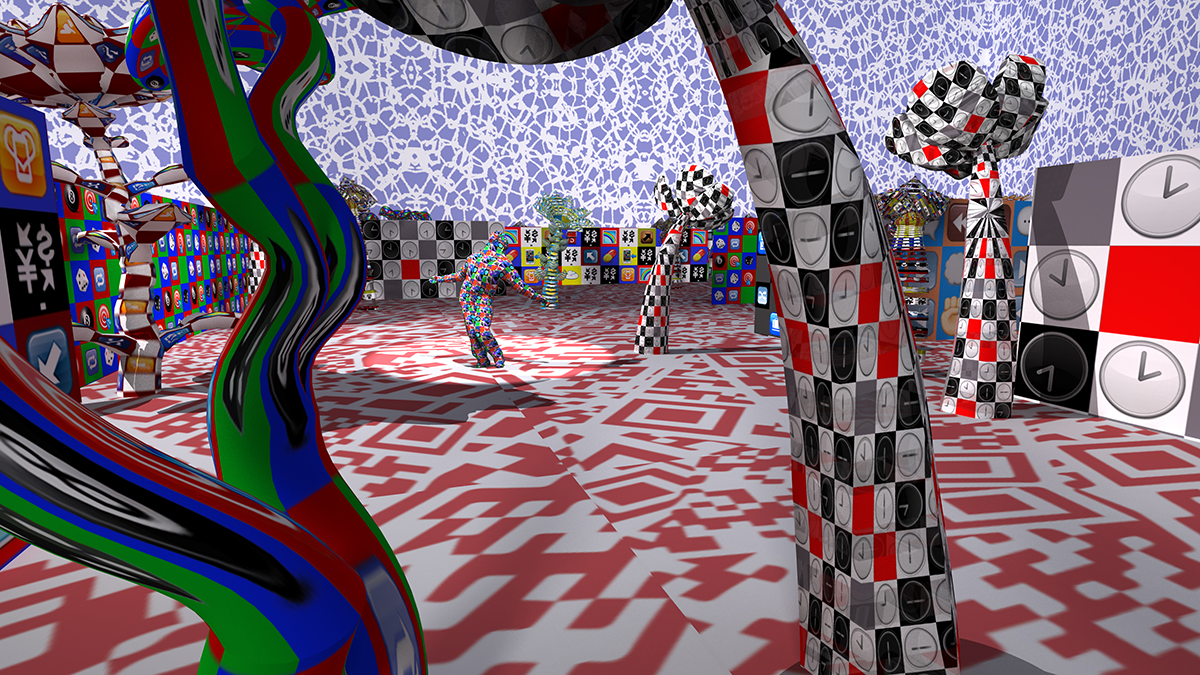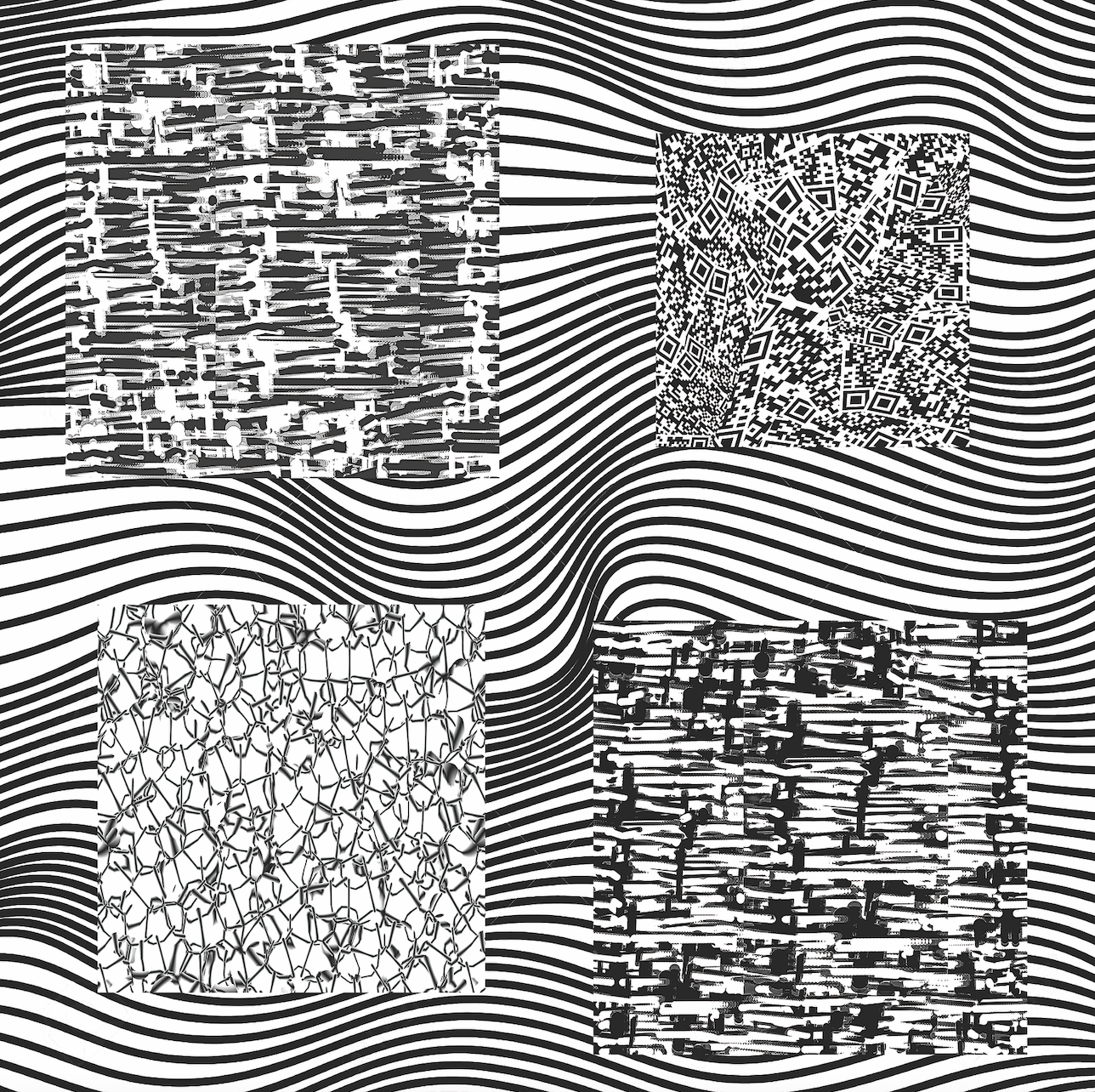Alice XR: A Machine For Thinking, 2019
Computer, software, VR headset, Vive VR world; wallpaper, custom Alice XR augmented-reality app for droid tablet; 3-channel animation plus computer software
Alice XR: A Machine For Thinking is a physical room installation consisting of projections on three walls covered by augmented-reality wallpaper with a VR headset accessible in the center of the room. Hart’s Alice world is conceived of as “a machine for thinking,” an hallucinatory chamber for repose and contemplation. It is the third work loosely inspired by Lewis Carroll’s Alice in Wonderland, created by Hart. Alice is a computer animation featuring an androgenous avatar dancing a live performance by ballerina Kristina Isabelle. Isabelle’s performance was digitally captured, then embedded in a virtual character, and finally staged inside of Hart’s fantastical world. Hart has also created a VR experience merging both realities, asking the cellist Danielle DeGrutolla to improvise music within this mixed reality. The music and the realistic motions of the dancer respond directly to the artificial world, to come together as an other-worldly yet visceral work intended for large-scale installation.
Hart further complicates her play between multiple realities by covering the gallery walls with augmented-reality wallpaper. Alice XR wallpaper features a decorative motif esthetically related to the Alice virtual worlds but also triggering an augmented-reality app for smart devices. This app turns a tablet or phone into a “magic mirror,” permitting viewers to see animation embedded in the graphic wallpaper pattern.
Alice XR mixes realities in the truest sense. The installation combines different perceptual models in a single exhibition space. The first is the “flat” three-channel high-definition movie projection. The second takes place within what has been mathematically and therefore perceptually constructed as a spherical dome: the Vive VR world. The third is the flat decorative animations on the wallpaper revealed through the augmented app. These three kinds of representational space coexist simultaneously, though each emerges from a different epoch in art history. The animations use different versions of photographic illusionism coming from the late 19th, then throughout the 20th century, the age of the analog camera. The VR dome-like space is post photographic, and is a new kind of post-digital picture-making. These multiple illusions transform Alice XR into a halfway space, one that is truly liminal. It bridges multiple worlds by uniting very different representational strategies. But it is also a world of inverted logic capable of confounding the mind and its perceptions.




